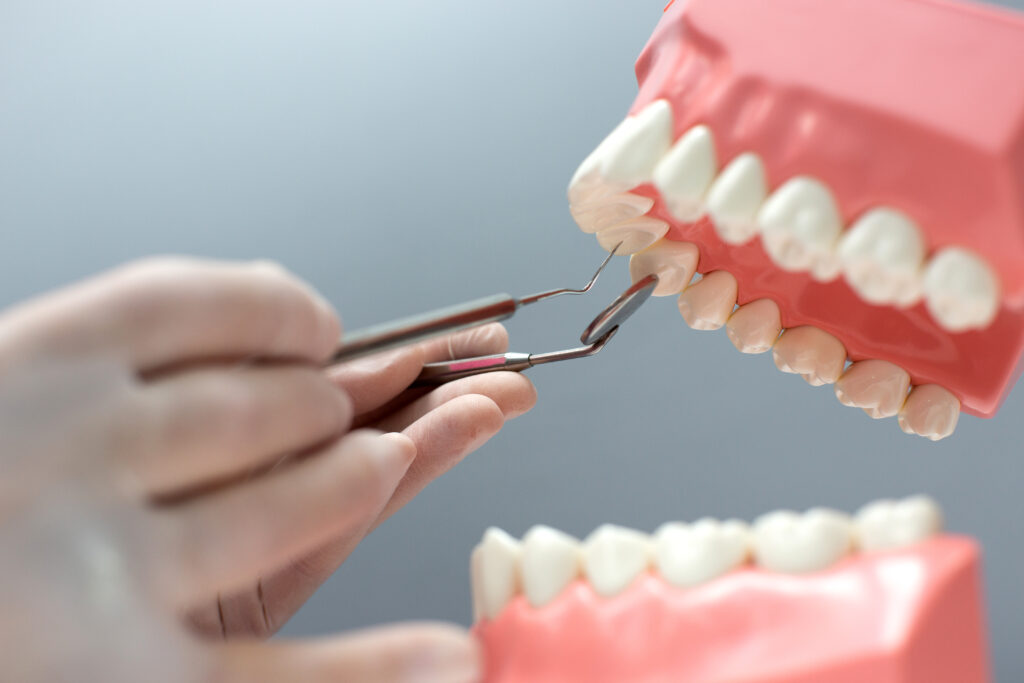Bone Grafting & Implants: What Happens If You Have Low Jaw Bone
Key Takeaways If you want dental implants but don’t have enough jawbone, you still have options. Bone grafting and other techniques make implants possible for many Oxnard patients who were once told “no.” At Puri Dentistry, we’ve seen patients with serious bone loss go on to enjoy stable, natural-looking implants that feel just like real teeth. A lot of people come in worried. They’ve been missing teeth for years, or they’ve worn dentures that slowly thinned their jawbone. They’re scared they missed their chance for implants. The truth is, low bone doesn’t automatically mean implants are off the table. It just means the path may take a few extra steps. Why Bone Matters for Dental Implants Implants aren’t just about the visible crown. The titanium post goes into the jawbone, and the bone fuses around it. No strong bone = no solid foundation. When teeth are lost, the jawbone doesn’t get the same chewing signals and starts to shrink. For some Oxnard patients, this loss happens quickly, especially in the back molar areas. That’s when we start talking about bone grafting for dental implants. What Bone Grafting Actually Is Bone grafting sounds scarier than it really is. In simple terms, it’s adding material to rebuild or thicken the jawbone so it can hold an implant. The grafting material might come from: Once placed, the graft encourages your body to grow new bone in that area. After healing, it’s strong enough to anchor an implant. Different Techniques for Different Cases Not every patient needs the same approach. Here are the common ones we explain at Puri Dentistry: A Real Patient Story Let’s share one. A man from Oxnard, in his 50s, came in. He’d lost two back teeth years ago, wore a partial denture, and assumed implants weren’t possible because “there’s nothing left to work with.” An exam showed major bone loss. We suggested a sinus lift with grafting. He was nervous, but he went ahead. Six months later, the bone was ready. We placed two dental implants, and today he eats steak without a second thought. His words: “I should’ve done this years ago.” Stories like his remind us, low bone doesn’t mean no implants. Healing Time and What to Expect This is where honesty matters. Grafting isn’t instant. Bone needs time to heal and integrate, usually three to six months before implants can go in. For some, that feels long. But compared to years of struggling with dentures, waiting a few months is worth it. During healing, most patients go about life as usual, work, family, eating soft foods at first, then back to normal. Cost and Insurance Questions Here’s the catch: grafting adds to the cost of implants. Insurance sometimes helps, but often it doesn’t cover everything. Still, when you weigh it against the cost of dentures, adhesives, and repeat dental work, many patients see it as a long-term investment. At Puri Dentistry, we’re upfront with pricing and payment options so there are no surprises. That’s part of making a plan that actually works for you. When Bone Grafting May Not Be Needed Not every case requires it. Some patients still have enough bone for shorter or specially designed implants. Technology has come a long way. 3D scans let us measure bone precisely, so we don’t graft unless it’s really needed. That’s why a personal exam is key. You might think you’re not a candidate, but a scan could show otherwise. The Takeaway Bone loss in the jaw is common, especially when teeth have been missing for a long time. However, this does not mean you can’t get dental implants in Oxnard. We can rebuild your jaw with procedures like bone grafting and sinus lifts. This will help give you strong, lasting teeth again. At Puri Dentistry, we’ve guided many patients through the process, some of them convinced implants weren’t possible. The look on their faces when they finally smile or chew comfortably again? That’s the best part of our work. If you’ve been told “you don’t have enough bone,” don’t write off implants. Come in, let’s take a look together, and see what’s really possible.
Bone Grafting & Implants: What Happens If You Have Low Jaw Bone Read More »


